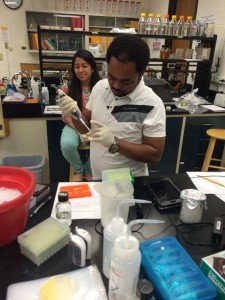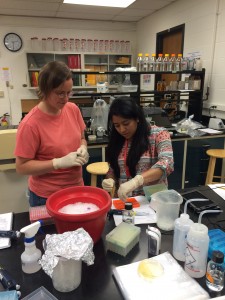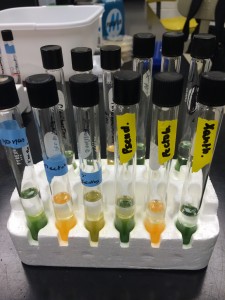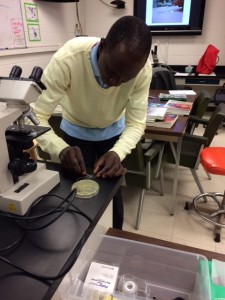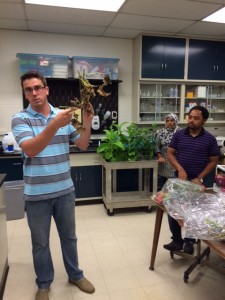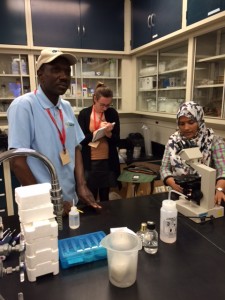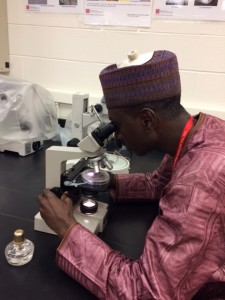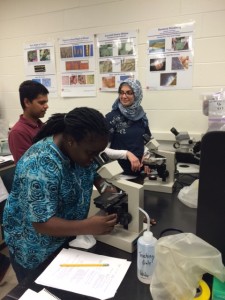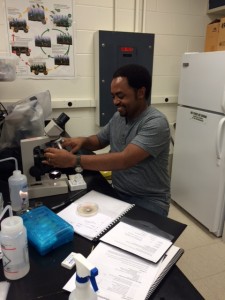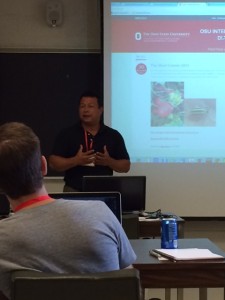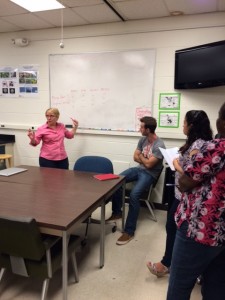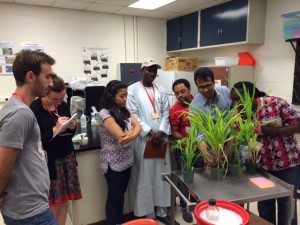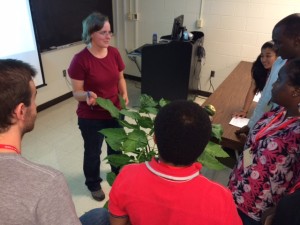We regret that due to low enrollment, the Diagnostics Short Course for 2017 was cancelled. Please check back again for information on the course for 2018.
Uncategorized
Details on the 2017 OSU Plant Diagnostics Short Course
Interested in learning the latest on plant disease and pest diagnostics? Details are now available: brochure-sps-2017-final. Dr. Sally Miller (Plant Pathology) and Dr. Luis Canas (Entomology) will once again lead this course, with a combination of lectures, hands-on laboratory diagnostics, microscopy and photography training and field trips.
Ms. Nuris Acosta (acosta.26@osu.edu) will answer your questions regarding registration, meals, lodging, visas, transportation, etc.
We are looking forward to another exciting short course!
Hold the Dates: OSU International Plant Diagnostics Short Course
Next Plant Diagnostics Short Course
We will not hold the Short Course in 2016, but plan to offer it again in 2017.
September 12, 2015. A Multicultural Food Fest
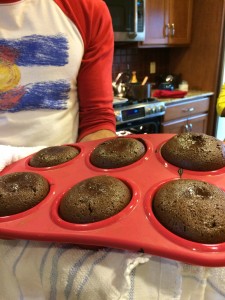 The weekend is a time for a break during the Short Course, and on Saturday, participants braved the rainy weather to visit the Wooster Farmers’ Market and a number of local shops and attractions. We were all then treated to multi-cultural lunch at the home of Professor Miller, with Brazilian barbecue, Bangladeshi chicken and vegetables, American salads – with fresh greens from the Farmers’ Market, and an amazing array of deserts – Ramekins Fondant au Chocolat, Tiramisu, rice pudding, and fruit tarts, all prepared by Short Course participants and trainers.
The weekend is a time for a break during the Short Course, and on Saturday, participants braved the rainy weather to visit the Wooster Farmers’ Market and a number of local shops and attractions. We were all then treated to multi-cultural lunch at the home of Professor Miller, with Brazilian barbecue, Bangladeshi chicken and vegetables, American salads – with fresh greens from the Farmers’ Market, and an amazing array of deserts – Ramekins Fondant au Chocolat, Tiramisu, rice pudding, and fruit tarts, all prepared by Short Course participants and trainers.
Friday, September 11, 2015. Day 5 – PCR Laboratory – Modern Disease Detection
On Day 5, workshop participants were fully immersed in PCR diagnostics in the laboratory, with hands-on exercises in traditional end-point PCR, multiplex PCR, real time quantitative PCR and isothermal DNA amplification assay. DNA extracted from FTA cards with tomato extracts from Tanzania tested positive for phytoplasma using nested PCR. Clavibacter michiganensis subsp. michiganensis, causal agent of bacterial canker of tomato and pepper, was identified using both qPCR and the University of Hawai’i SmartDart LAMP (isothermal DNA amplification) assay.
Participants also had time to check on results of some biochemical tests for bacterial identification.
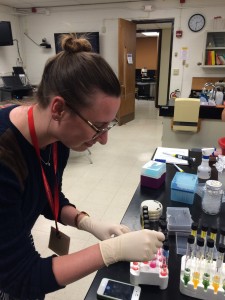
Updating results…
Finally, Prof. Luis Canas presented his first Case Study on insect identification: Hemiptera:Homoptera.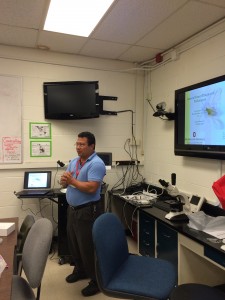
September 10, 2015. Day 4 – PCR and Mites Diagnostics
Polymerase Chain Reaction (PCR) assays have become an important and widely used tool for plant disease diagnosis. Thanks to a great deal of published research over the last two decades, there are primer sets and protocols available for a wide range of plant pathogens. In addition, advanced applications such as real-time quantitative (q) PCR and isothermal DNA amplifica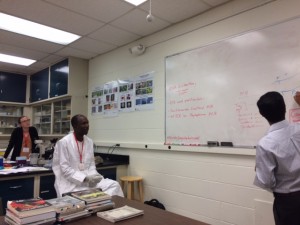 tion are being adopted for plant disease diagnosis. Today, Professor Francesca Peduto Hand provided an excellent primer on the theory and practice of end-point PCR, qPCR and isothermal DNA amplification assays such as LAMP.
tion are being adopted for plant disease diagnosis. Today, Professor Francesca Peduto Hand provided an excellent primer on the theory and practice of end-point PCR, qPCR and isothermal DNA amplification assays such as LAMP.
The laboratory began with an end-point PCR assay, and participants extracted DNA, calculated master mix components, practiced accurate pipetting, and set up PCR assays. Mynul Islam and Claudio Vrisman led the group through the PCR paces. The assays will be completed tomorrow.
The group also learned all about the identification of mites from Dr. Cal Welbourn, Florida Dept of Agriculture, via videoconference. Dr. Welbourn presented an extensive survey of the different types of pest and beneficial species of mites and how they can be identified.
September 9, 2015. Day 3 – Phytobacteriology
Bacterial pathogens of plants are increasing in importance worldwide, particularly where rainfall events are increasing in number and intensity. However, bacterial pathogens can be tricky to to identify. Professor Sally Miller and her students Anna Testen, Claudio Vrisman and Ferdous Elahi provided lectures and lab exercises focused on isolation and identification of the major genera of plant pathogenic bacteria. These included the Gram-negative Pseudomonas, Xanthomonas, Ralstonia, Pectobacterium, Erwinia, Pantoea, and Agrobacterium, and the Gram-positive Clavibacter and Bacillus, as well as phytoplasmas.
Participants evaluated colony morphology on various media, and practiced microscopic visualization of bacterial streaming, plant tests of virulence including the hypersensitive response (HR) and soft rot tests, KOH test for Gram reaction, and LOPAT, among others.
September 8, 2015. Day 2 – Fungi and Oomycetes
For Day 2 we focused on diagnosis of plant diseases caused by fungi and oomycetes. Professor Anne Dorrance, an OSU expert on soybean diseases, led participants in a lecture describing the key diagnostic structures of these pathogens, as well as approaches to optimize the diagnostic process. For the oomycetes, coenocytic mycelia, sporangia, oogonia, antheridia and oospores were emphasized, while for fungi the many different types of spores and fruiting bodies were emphasized.
Back in the lab, participants viewed these diagnostic structures under compound and dissecting microscopes, learning various “tricks of the trade”. They also completed an ELISA test and immunostrips for Phytophthora in squash, tomatoes, and other crops.
September 7, 2015. Day 1 – Diagnosis of Virus Diseases and Abiotic Disorders
Today is the first day of the OSU Diagnostics Short Course. Participants from Tanzania, France, Ireland, Nigeria, El Salvador, Liberia and the US started off with a quick anonymous “clicker” survey to determine competencies in various areas of pest and disease diagnostics, followed by a presentation by Professor Luis Canas on digital diagnosis of insect pests. In the afternoon, Dr. Peg Redinbaugh, USDA ARS, deftly wove in her experience with maize lethal necrosis disease in Kenya with general approaches to diagnosis of diseases caused by viruses. This was followed by a lab in which participants examined virus symptoms, prepared virus inoculum from “unknowns” and inoculated indicator plants. We will follow up next week with observation of symptoms on inoculated plants, a tissue blot immunoassay and other tests to identify the viruses.
OSU Plant Pathology grad student Anna Testen closed the day with a lecture on diagnosis of abiotic plant disorders.
